
50 years Later, Why the Warren Report Cannot Be Trusted
by Staffan H Westerberg & Pete Engwall
The Warren Commission produced over 50 000 pages to convince the American people that Lee Harvey Oswald alone killed Kennedy. However, in this entire body of work there are only eight pieces of unchallenged claims that they call evidence, which initially pointed to young Lee’s guilt. After 50 years of research those eight pieces of evidence have been proven false. One by one they all exonerate Oswald. Anyone who insists that Lee Harvey Oswald was the lone assassin has never looked deeply into the facts. If they had they would know that there is no real evidence.
How people in the research community and elsewhere can say things like “the Warren Commission did a poor job” or “the Warren Commission was a shoddy piece of ‘craftsmanship’” or “the Warren Commission got it wrong” is nothing short of astounding. There are many books and articles that criticize the Warren Report and the Commission’s work. Yet many are either written with the intention to misinform or mislead, or there is limited insight on some author’s part. We believe the Warren Commission together with the mainstream media was the perfect deception and they did a clever job of betraying the public and thus creating confusion. Criticizing the Commission is therefore a moot point. Or as Mark Lane once flat out told the world: “The Warren Commission was a CIA operation.”
Investigation
Let’s start with the question of investigation. The public was led to believe that there would be a murder investigation. But there are serious doubts that this was truly the Commission’s intention. Here is what they didn’t do that they probably should have done in order to be able to call it a thorough murder investigation: First and foremost they should have appointed seasoned crime investigators instead of relying on lawyers and politicians with different background and experience. One could assume they should have questioned all the key witnesses that were present in Dealey Plaza on the day JFK was killed – especially the ten closest witnesses to the limousine on Elm Street. Apparently the Commission never called them. And what about all the hospital personnel at Parkland and Bethesda that saw the big hole in the back of Kennedy’s head? The Warren Commission chose to disregard the Dallas doctors’ statements completely. Another witness they never called to testify was the President’s own physician Admiral George Burkley, being the only medical doctor who saw Kennedy’s wounds in both Parkland and Bethesda. That means that the Commission avoided investigating discrepancies between witnesses as well as the medical evidence. Furthermore, there should have been an in-depth investigation of the number of people that the Dallas Police and Dallas Sheriff’s Department arrested on the 22nd of November 1963. Even though we know there were arrests besides Oswald’s, these people were never booked and documented by law enforcement. The simple fact that two police officers identified the weapon found on the sixth floor in the Book Depository as a Mauser should have been enough to establish the make of the weapon, especially since both officers confirmed this in separate affidavits.
Later the Dallas Police retracted this information and informed the press that the policemen had instead found a Carcano. In an “honest case” one would assume the police would want to explain a discrepancy like this. However, it didn’t happen and the Warren Commission didn’t furnish an explanation. The Commission should also have kept an open mind and thoroughly investigated an alternative to Oswald as the perpetrator and/or if there was more than one assailant. I nstead the Commission only had their sights focused on Oswald – actually even before any witnesses had been heard. Not to mention all the strange questions put to important witnesses; instead of asking the most logical questions, witnesses had to go through time consuming, trivial and pointless questions that in no way explained what they had seen in Dallas that day. Even people with no experience of violent crime investigations would quickly sense that this whole approach was seriously problematic. In other words it didn’t look like the President’s Commission was meant to conduct a real investigation. Even if headlines in several U.S. newspapers the week after the assassination told the American public:
“JOHNSON NAMES A 7-MAN PANEL TO INVESTIGATE ASSASSINATION; CHIEF
JUSTICE WARREN LEADS IT”,
This wasn’t a certainty by any means. Actually the whole thing looked dubious from the beginning, especially when you read what acting Attorney General Nicholas Katzenbach wrote in his memo on Sunday the 24th (dated Monday the 25th), and when you listen to the phone call from journalist and alleged CIA asset Joseph Alsop to President Johnson on Monday morning, thus compare it with what Executive Order 111 30
actually stipulates.
Katzenbach’s Memo
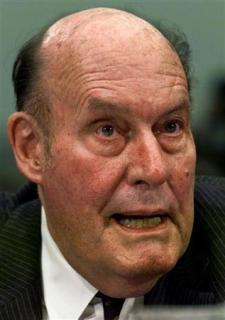
“The Attorney General Robert F. Kennedy shouldn’t have to investigate the murder of his own brother” was something that Lyndon Johnson voiced – perhaps very conveniently – more than once that fateful weekend. This meant that RFK’s deputy, Nicholas Katzenbach, had to step in and take control over the situation. And it looks far from a coincidence that already on Sunday the 24th Katzenbach started to work on a memorandum that would quickly be suppressed for reasons of National Security until April 1994 when it became known to the American public. The memo clearly indicates that Bobby Kennedy’s deputy didn’t intend to set up a real investigation into the murder of President Kennedy; the reason for this was “it could spur speculations of either a communist- or a right-wing conspiracy”. The memo was sent to President Johnson’s press secretary Bill Moyers on Monday the 25th and today we cannot interpret this memo as anything else but a premature identification of Oswald as the lone assassin, as is shown in Katzenbach’s following two points:
[ez_box title=”Katzenbach Memo” color=”blue”]
1. The public must be satisfied that Oswald was the assassin; that he did not have confederates who are still at large; and that the evidence was such that he would have been convicted at trial.
2. Speculation about Oswald’s motivation ought to be cut off, and we should have some basis for rebutting thought that this was a communist conspiracy or (as the Iron Curtain press is saying) a right-wing conspiracy to blame it on the communists. Unfortunately the facts on Oswald seem about too pat-too obvious (Marxist, Cuba, Russian wife, etc.).
[/ez_box]
Katzenbach also recommended “the appointment of a Presidential Commission of unimpeachable personnel to review and examine the evidence and announce its conclusions.”
Here emphasis laid on unimpeachable personnel more than what they were going to do. Onthe same Sunday Katzenbach wrote that memo, the FBI Director, J. Edgar Hoover turned to Lyndon Johnson’s advisor Walter Jenkins with the following statement: “What I and Mr. Katzenbach want to see now is something be published that can convince the American public of Oswald as the lone assassin.”
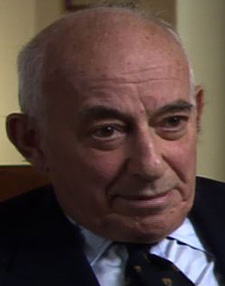
So here we have it twice, Lee Harvey Oswald was guilty even though neither the FBI nor the Warren Commission had started any investigation yet. The main objective was that Oswald alone was guilty and a Presidential Commission should take over the investigation. To emphasize this special objective the Deacon from Yale, Eugene Rostow, made a phone call to Johnson’s press secretary Moyers. Rostow seemed to underscore Katzenbach’s proposal of a Presidential Commission when he said: “In this situation, with the bastard (Oswald) killed, my suggestion is that a presidential commission be appointed of very distinguished citizens in the near future.”
Again we have it: The focus was who was to be in the Commission and not so much getting to the bottom of a crime. T he men who lobbied for a Presidential Commission were Nicholas Katzenbach and Eugene Rostow via Bill Moyers – and J. Edgar Hoover via Walter Jenkins and Lyndon Johnson. All seemed to agree on Oswald’s guilt and the importance of unimpeachable citizens. This means that without really knowing, they didn’t care if Oswald was guilty or not, but they were definitely going to prove that he was, one way or another. All they had to do was to create something that looked like an investigative body that would guarantee the end result.
Does this sound like they wanted to know what really happened in Dealey Plaza? In any normal western democratic nation it is the justice system that is supposed to deal with an investigation when a murder is committed. I t doesn’t matter if it happens in Germany, Sweden or the United States; this is one very major reason why democratic countries even created justice systems, going back as far as perhaps the Magna Carta from the year 1215. But when John F. Kennedy was killed neither the Dallas Police Department nor the Federal Bureau of Investigation could be trusted to take care of an investigation of what was explained as a simple homicide. The new President and his advisors didn’t trust anything but a civilian Commission to find out who had killed Kennedy. Under “normal” circumstances a commission would not get in place until after regular law enforcement authorities have failed their task; this rarely happens when it comes to violent crimes. However, the need to create “commissions” to investigate violent crime and abandon the regular U.S. justice system seems to be a common disease in the United States after 1963. That could very well put the U.S. behind the justice system in most western democracies in the world.
Investigation or Evaluation
President Lyndon Johnson would often bully his way to dominance in conversations with other people; be it over the phone or face to face. However, the person calling the White House at 10:40pm on Monday the 25th of November must have been of a different caliber. In this conversation Johnson came across as sort of “a student reporting to his mentor”, eagerly explaining what he had done so far after the assassination.
“I’m sure you are right”, Washington journalist Joseph Alsop agreed. “Except there is one missing piece… Use the procedures you have got and when FBI have completed its work – as you do not want the Attorney General to have to review the evidence of his own brother’s assassination – you draw up a report based on the FBI investigation.”
Lyndon Johnson responded: “Our White House lawyers tell me that the President must not inject himself into local killings…” Before the new president had finished the sentence Alsop cut in: “I agree with that, but in this case… mind you Mr. President, I am not talking about an investigative body. I am talking about a body that take all the evidence that FBI have amassed when they have completed their inquiry and produce a public report on the death of the President.”
LBJ: “No, but…”
Alsop: “Wait a second, now … that is a way to transmit to the public, without breach of confidence … a way that will carry (an) absolute conviction of what the FBI has turned up.”
LBJ: “Why can’t the FBI do this?”
Alsop: “Because no–one on the left won’t believe the FBI … and the FBI doesn’t write very well …”
If we didn’t know who was the President of the United States and who was a Washington columnist it sure sounds like the latter was in charge somehow. It was as if the caller talked to the President in a condescending manner and at the same time was patting his head. Alsop sounded like an eastern upper-class aristocrat:
“You have already made a marvelous start… you haven’t put a damned foot one quarter of an inch wrong… And I have never seen anything like it… You’ve been simply marvelous in the most painful circumstances.“
Who was Joe Alsop?

Some would argue he was just one of many political columnists stationed in Washington, with published articles in newspapers all around the country. Others would point out the fact that he was suspected of being a CIA asset working to protect their interest. The Church Committee found his name in the middle of something called Operation Mockingbird – a CIA operation with the purpose of infiltrating American news media, beginning in the early 1950’s. Moreover, Alsop was part of the Washington establishment and closely connected to the founders of the CIA. When John Kennedy captured the Democratic nomination in the 1960 election he was more or less blackmailed with the help of J. Edgar Hoover to take Lyndon Johnson on the ticket.
On the eve of the election alleged CIA assets Philip Graham of the Washington Post and Joe Alsop visited John Kennedy at the Biltmore Hotel in Los Angeles, with the obvious intent of forcing Kennedy into running with Johnson in the presidential race. Later Alsop acted in midst of the build-up of pressure in Washington to support an escalation of U.S. involvement in Vietnam; the columnist was colluding with Henry Cabot Lodge (against Kennedy) in the preamble to the coup in South Vietnam, which was orchestrated from the CIA station in Saigon. Therefore, it does not require an abnormal amount of imagination to be able to at least suspect that Joseph Alsop could be a designated spokesperson and a messenger for individuals that perhaps tried to not only help the new President, but to steer the actions of Lyndon Johnson as well as formulate what sort of an investigation was wanted. However, this does not mean we believe in Johnson’s innocence – only that some sort of a higher authority controlled both him and the events.
Executive Order 11130
Only eight days post JFK’s demise, Lyndon Johnson’s Commission was in place. The headline of Executive Order 111 30 read:
APPOINTING A COMMISSION TO REPORT UPON THE ASSASSINATION OF PRESIDENT JOHN F. KENNEDY
It goes on to say:
“Pursuant to the authority vested in me as President of the United States, I hereby appoint a Commission to ascertain, evaluate and report upon the facts relating to the assassination of the late President John F. Kennedy and the subsequent violent death of the man charged with the assassination.”
So far it looked very much like Alsop had suggested – there was not going to be an investigation, but an evaluation of the FBI investigation, which it states in the next paragraph:
“The purposes of the Commission are to examine the evidence developed by the Federal Bureau of Investigation and any additional evidence that may hereafter come
to light or be uncovered by federal or state authorities; to make further investigation as the Commission finds desirable…”
Still there was no real sign of the Commission undertaking a murder investigation. Although the Commission could “see fit investigate what the Commission finds desirable…”
Outlines
The way this investigation was heading it didn’t look like an honest attempt to find out what had happened in Dallas a week earlier. And that was definitely emphasized a month later: In January of 1964, before any witness had been called to testify before the Commission, General Counsel J. Lee Rankin had already drawn up an outline of how the Commission would conduct its “investigation”; these five points would supposedly lead Johnson’s Commission to the truth:
• Lee Harvey Oswald as the Assassin of President Kennedy
• Lee Harvey Oswald: Background and Possible Motives
• Murder of Tippit
• Evidence Demonstrating Oswald’s Guilt
• Refutation of Allegations
Those five points are all any level headed person needs to see in order to be able to understand that this was a mockery of justice. What were they going to do? Pick and choose from the FBI report – and then report on that? Investigate just a little bit? Those five points are a good indication of the Commission being nothing short of a cover-up operation full with fabrications and deceit going on.
Bogus Inquires
And it gets even clearer when you scrutinize the testimonies. The question techniques held by Warren Commission staffers such as Ball, Belin, Liebeler, Specter and others seemed often very strange, to say the least. A witness could express something of interest, but the inquirer chose to completely ignore it; as a matter of fact the lack of follow-up questions was in many cases on the borderline to the ridiculous.
Motorcycle Police Officer Joe Marshall Smith is one example. He had been one of the cops that ran up to the Grassy Knoll right after the shooting. It was the 23rd of July 1964 when Warren Commission attorney Wesley Liebeler had called Smith into questioning. Smith couldn’t say for sure, but he was under the impression that the shots had come from the area of the knoll and the parking lot. But Liebeler didn’t seem to be interested in knowing about any shooter from the knoll; instead he would rather talk about the Book Depository Building, almost like he was acting in an commercial for TV and mentioned the building eleven times.
Joe Marshall Smith: “… this woman came up to me and she was just in hysterics. She told me, “They are shooting the President from the bushes.” So I immediately proceeded up here.”
Wesley Liebeler: “You proceeded up to an area immediately behind the concrete structure here that is described by Elm Street and the street that runs immediately in front of the Texas School Book Depository, is that right?”
*When Smith a few moments later mentioned he had encountered a man from the Secret Service behind the fence on the knoll, Liebeler just got mildly excited. Considering that the hearing with Smith took place in July of -64, there is no question that Liebeler already knew that there had been people with false Secret Service identification’s in Dealey Plaza that day. He definitely knew that. And how he knew it was because the Secret Service Chief James Rowley had told the Commission a few weeks earlier that there were no Secret Service men stationed in Dealey Plaza on November 22nd.
Joe Marshall Smith: “There was some deputy sheriff with me, and I believe one Secret Service man when I got there. I got to make this statement, too. I felt awfully silly, but after the shot and this woman, I pulled my pistol from my holster, and I thought, this is silly, I don’t know who I am looking for, and I put it back. Just as I did, he showed me that he was a Secret Service agent.”
Wesley Liebeler: “Did you accost (speak to) this man?”
Joe Marshall Smith: “Well, he saw me coming with my pistol and right away he showed me who he was.”
Wesley Liebeler: “Do you remember who it was?”
Joe Marshall Smith: “No, sir; I don’t – because then we started checking the cars. In fact, I was checking the bushes, and I went through the cars, and I started over here in this particular section.”
Wesley Liebeler: “Down toward the railroad tracks where they go over the triple underpass?”
Joe Marshall Smith: “Yes.”
This whole inquiry with Joe Marshall Smith was less than professional from a hard-nosed lawyer. This is perhaps what Liebeler should have asked Smith:
Wesley Liebeler: “What did she see, what did you see? Did you believe her? Did other people see a shooter on the knoll? Did you ask around? What did you find out?
Joe Marshall Smith: “I pulled my pistol from my holster, and I thought, this is silly, I don’t know who I am looking for, and I put it back. Just as I did, he showed me that he was a Secret Service agent.”
Wesley Liebeler: “You know there were not supposed to have been any Secret Service men there at the time, according to their boss James Rowley. How did this individual look, did he make you suspicious, can you give a description, what did he tell you, did he interact with someone else, where did he go after the encounter with you?”
Interrogation techniques are supposed to aid a friendly witness to remember more than he or she initially is aware of. The interrogator should help support the capacity of remembering seemingly unimportant details that could help uncover the situation. But reading through these testimonies one never see this scenario.
What Not to Ask
When Allen Dulles and Arlen Specter questioned Dr. Malcolm Perry he told them about the wound in the front part of the neck, which could mean a shot from the front. Did Dulles and Specter pick up on that because it could indicate other shooters? No, the former CIA Chief was more interested in asking the doctor about the procedures of a tracheotomy. When Dr. McClelland told the Warren Commission about the head wound; “the right posterior portion of the skull had been extremely blasted out; the parietal bone was protruded, the occipital bone was fractured in its lateral half, cerebral tissue had been blasted out”, it meant in layman’s terms that there was big hole in the lower back of Kennedy’s head. And that was another indication of a shot from in front – clearly not a bullet from behind in the Book Depository.
How did Arlen Specter react to this revelation; what would his follow-up question be?
“Was Kennedy alive at the time you first saw him?”
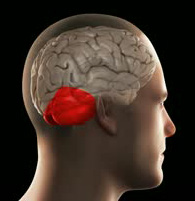
Reading through several testimonies show that Arlen Specter’s follow-up questions produced the same skew pattern; he didn’t seem to care that trauma doctors such as Dr. Carrico and Dr. Kemp Clark saw a big hole in the back of Kennedy’s head. Dr. Kemp Clark: “The President was lying on his back on the emergency cart. I then examined the wound in the back of the President’s head. This was a large, gaping wound in the right posterior part, with cerebral and cerebellar tissue being damaged and exposed.”
Dr. Charles J. Carrico had the same view; he told Arlen Specter that “there seemed to be a 4-5 centimeter area of avulsion of the scalp and the skull was fragmented and bleeding cerebral and cerebellar tissue.” Dr. Charles Baxter was another one who saw a large hole “6 by 8 or 10 centimeter in the back of Kennedy’s head”. Also Dr. Ronald Jones saw a “large hole to the right posterior of the head”.
Still, Arlen Specter seemed to know exactly what not to ask.
Existence of Original Autopsy Photos
The Parkland doctors were seasoned trauma doctors that had seen hundreds of gunshot victims every year. But they were not even allowed to see the x-rays or autopsy photographs of the murdered president (they were given various lame excuses). That says a lot of how they were treated by the Commission. The only exception was Dr. Robert McClelland, who at one time had the opportunity to view the photos in the National Archives.
In September 2013 Professor McClelland told of this event (in a Six Floor Museum panel discussion with Dr. Ronald Jones) with a rather stunning result: A soldier, armed with a rifle, accompanied McClelland the whole time in the archives. The former Parkland doctor was lead into a small room where another soldier sat behind a desk holding a small stack of photos in his hands. McClelland got to see one photo at a time. Then this anonymous soldier asked if this was consistent with what the doctor had seen in Trauma Room 1 at Parkland on the 22nd of November 1963 and McClelland answered “yes”.
This is the type of answer that will make a JFK researcher sit up straight. Professor Robert McClelland has always maintained the large hole of exit located in the back of the president’s head and he still does. Minutes before he told the panel of this event in Washington he repeated the placing of the head wound in the occipital area of JFK’s head.
The question becomes:
Did McClelland see another sets of photos than the two photos with the back of Kennedy’s head intact? Was he shown photos of JFK’s “real” head wound?
For McClelland to accept that the photos corresponded with his memory and visual impression, it must have been very near in likeness with what the doctor remembered. And if so, it simply couldn’t have been the photos that he saw of the intact back of the head, that are in the archives as the official photos shown many times in various books. These are the same photos that Dr. David Mantik and many others have claimed are doctored and faked. Maybe someone should clear this up with Dr. McClelland?
Lack of Common Sense
Arlen Specter’s questioning techniques were far from common sense. On March the 20th of 1964 he questioned a nurse from Parkland Hospital, a nurse with nine years of trauma experience – Miss Jane Carolyn Wester.
Arlen Specter: “Did you receive notice on that date that President Kennedy and Governor Connally were en route to Parkland Memorial Hospital to receive treatment?”
Miss Wester: “I was not aware that they were in the hospital.”
Arlen Specter: “When was it first brought to your attention, if at all?”
Miss Wester: “At noon, around noon – noontime – I’m not sure as to the exact time it was. I was relieving the secretary for lunch and the phone rang. Someone in the pathology department asked if the President were in the OR and I answered them “No” and they said that a Secret Service agent was down there and as soon as the President did arrive in the OR, would I please call them.”
Arlen Specter: “What was your next connection, if any, with respect to the treatment of either President Kennedy or Governor Connally at Parkland?”
What’s wrong with this picture?
Actually there were two things that Wester revealed that should have caused an immediate reaction from Specter. First, she said the phone call came at noon. We all know that the President was alive and well at that time and had just left Love Field. Specter should have pointed that fact out and asked her specifically about the time discrepancy; otherwise it seems like someone could have known what was going to happen well before hand. The next thing Wester told Specter was about a Secret Service agent already in the hospital well before the President had arrived. How could that be when the presidential limousine arrived at Parkland the same time as the Secret Service? Even if these questions somehow could have logical answers Specter should have asked Wester to explain her statements. But he didn’t – and that, we think, is another dead giveaway of a staged and steered inquiry.
Strange Focus
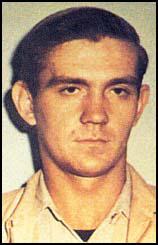
One gets an array of strange images reading the testimonies in the Warren Report. Some of them are short and sweet, some are seemingly pointless, others are boringly long and don’t lead anywhere and many simply just have a strange focus. At 10:45pm on the 1st of April 1964 a fellow by the name of Curtis Laverne “Larry” Crafard was called to testify. He was one of many peripheral witnesses that for some reason were of interest to the Commission.
Crafard worked in the Carousel Club as a “handyman” for Jack Ruby. When the shots occurred on Elm Street he was allegedly asleep in a room behind the bar; the Carousel Club was several blocks away from Dealey Plaza. Exactly why the Commission felt the need for an employee at Ruby’s nightclub to explain his whole life in over 3900 questions is a sheer mystery, especially when he was neither a suspect nor a close witness to the killing.
Larry Crafard’s testimony – talk about a strange hearing. The inquiry into Crafard’s life and activities continued on for more than two days and contained, as we have said, over 3900 questions; they talked about hitch hiking, lunch money, former brothers in law and just about anything under the sun that seemingly didn’t have anything to do with the Kennedy assassination. When Crafard mentioned that Ruby had a feminine way about him, the Commission would ask him if Ruby lisped. They also asked if George Senator lisped. Apparently and for some weird reason they thought that lisping was a sign of homosexuality. The whole read is crazy.
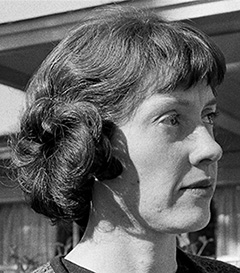
Another person that the Commission spent a lot of time and questions on was Ruth Paine, Marina Oswald’s landlady/alleged CIA handler. Mrs. Paine was also far away from the crime scene. Nevertheless, she was apparently important enough to be questioned for hours on five different occasions in 1964. All in all the Commission asked her approximately 800 questions. Crafard and Paine were seemingly more important than most of the other witnesses; Mrs. Paine certainly was a big “help” in creating the negative image of Lee Harvey Oswald.
What Jackie Saw
The closest witness to the killing of JFK was of course his wife, Jackie. For that reason alone we would assume that the Commission would ask her as many questions as possible, maybe not 3900, but certainly several in depth questions. However, the Commission spent just about ten minutes with her, only to give her the opportunity to fully explain what had happened within the boundaries of 15 questions; and on top of that, a crucial statement she made somehow was edited out of the report. In 2001 an historical research firm reported that the Court Reporter’s tape shows Mrs. Kennedy’s testimony before the Warren Commission had additional descriptions, which were withheld. This is what the official version in the Warren Report stated:
“And just as I turned and looked at him, I could see a piece of his skull and I remember it was flesh colored. I remember thinking he just looked as if he had a slight headache. And I just remember seeing that. No blood or anything. And then he sort of did this (indicating), put his hand to his forehead and fell in my lap… And just being down in the car with his head in my lap…”
The deleted part read:
“I was trying to hold his hair on. From the front there was nothing — I suppose there must have been. But from the back you could see, you know, you were trying to hold his hair on, and his skull on.”
A new analysis claims she also said:
“I could see a piece of his skull sort of wedge-shaped, like that, and I remember that it was flesh colored with little ridges at the top.”
Some researchers will point out that the last (deleted) statement will make it impossible to ascertain whether she meant that JFK’s head wound was located in the back of the head or at the top. However, you could argue (with some degree of common sense) that the “ridges at the top” in this case probably meant the top of the hole in the back of his head. Furthermore, since the Parkland doctors and many researchers believe the autopsy at Bethesda did not depict the truth when it came to the location of Kennedy’s wounds, especially the head wound, Jackie Kennedy’s deleted part of testimony could of course be viewed as an indication by her as a hole in the back of JFK’s head. What is worse, it is not like Mrs. Kennedy’s testimony would have been a difficult piece of document to administrate or a complex matter to record: J. Lee Rankin only asked her 15 relevant questions pertaining to what she saw that day. And “Losing” the part when she describes her husband’s head wound, simply cannot have been a mere mistake by the Warren Commission. I t says something when Rankin avoided asking Mrs. Kennedy to explain the wound in further details, (since the answer she gave was so unclear) – especially when she had no problem talking about the wound.
The Man in Charge
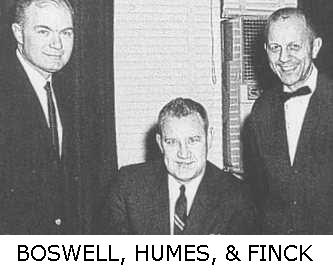 The number of questions the Commission put to the three men in the autopsy room at Bethesda Naval Hospital is also quite interesting. Commander James Humes was officially the pathologist in charge of the autopsy. His assistant was Commander J. Thornton Boswell. At their service was perhaps the foremost wound ballistic expert in the Armed Forces – Army Lieutenant Colonel Pierre Finck, Chief of the Wound Ballistics Pathology Branch of the Armed Forces Institute of Pathology. While Humes was asked 227 questions about the results of the autopsy, Finck was asked only 47 and Boswell only had to give answer to 8 questions.
The number of questions the Commission put to the three men in the autopsy room at Bethesda Naval Hospital is also quite interesting. Commander James Humes was officially the pathologist in charge of the autopsy. His assistant was Commander J. Thornton Boswell. At their service was perhaps the foremost wound ballistic expert in the Armed Forces – Army Lieutenant Colonel Pierre Finck, Chief of the Wound Ballistics Pathology Branch of the Armed Forces Institute of Pathology. While Humes was asked 227 questions about the results of the autopsy, Finck was asked only 47 and Boswell only had to give answer to 8 questions.
In contrast – when Pierre Finck took the witness stand in New Orleans in 1969, Garrison’s man Alvin Oser put 470 questions to the wound ballistic expert. But apparently, finding out about Larry Crafard’s life was of a higher importance to the Commission than finding out what Jackie Kennedy, Pierre Finck, James Humes and Thornton Boswell had observed.
Reading through the testimonies of the three pathologists’ one can’t help wondering which one of them was really in charge? Who was the most important person in the morgue at Bethesda on the evening of the 22nd of November 1963? Was it Humes, Boswell, Finck, or perhaps Galloway? Our money is on Finck. Had the autopsy been conducted at Walter Reed Army Hospital, Army Colonel Pierre Finck would most likely have been present there too. However, we are not sure that naval men Humes and Boswell would have been called over from Bethesda to Walter Reed.
Pierre Finck graduated from the University of Geneva Medical School in Switzerland in 1948. He must have enrolled sometime during World War Two and was probably not the average medical student. Ten years after the war he became a pathologist at the U.S. Army Hospital in Frankfurt Germany; four years later he was called to the Armed Forces Institute of Pathology in Washington, only to be appointed Chief of the Wound Ballistic Pathology Branch. This was the expert the nation turned to when it came to gunshot wounds and how to understand them. And while there were more than twenty spectators in the bleachers during the autopsy at Bethesda, there were only three people present during the Bobby Kennedy autopsy in Los Angeles in 1968 – and one of them was Pierre Finck. He served as America’s premiere expert in ballistics, but when researchers accused him of working for the CIA, Finck packed his bags and returned to his home in Switzerland.
In the book The Secret Team Colonel L. Fletcher Prouty talked about “Focal Point Agents” and explained “there are other military personnel working with the CIA who are really Agency employees”.
“U.S. Army Colonel Pierre Finck’s background shows a deep connection to the national security establishment”, wrote Jim DiEugenio in a 1995 Probe article: “He appeared as an expert medical witness before the International Commission of Jurists in Panama, 1964. His role there was to show that the gunshot victims were not killed by American soldiers. In Germany he testified in a case involving the killing of an American officer. He was also a consultant to the FBI. The most curious association is Finck’s connection to the International Police Academy, formerly the Inter-American Police Academy, founded in Panama by the CIA’s station there. Later, the Academy moved to Washington. CIA-controlled and using AID cover, the International Police Academy was engaged in training police forces from the Third World. Finck was a lecturer there.”
The interview with Pierre Finck in the Shaw trial was many times longer than the one with the Warren Commission, which in comparison only asked ten percent of the questions put to him by Oser in the Shaw trial. Not even Colonel Finck would agree to Arlen Specter’s idea of a single bullet theory: “No; for the reason that there are too many fragments described in that (Connally’s) wrist,” Colonel Finck replied. Still, that didn’t hinder Specter and his Warren Commission friend, Gerald Ford, from creating the “evidence” for “The Single Bullet Theory” that the whole world knows as the “Magic Bullet.”
Eight Pieces of “Evidence”
Let’s talk about evidence. Warren Commission/HSCA apologists often refer to evidence of Oswald’s guilt. In the light of this we would like to emphasize that (legally speaking) evidence is not evidence until it is processed in an Adversarial System, where a prosecutor presents evidence to a court that the defense has the right to challenge. An unchallenged commission could not – in any legal sense – present any material and call it “evidence”. It should be addressed as alleged evidence if it has never been tested for accuracy and established as evidence in a court of law. The Warren Report therefore contains not a single scrap of legally acceptable evidence of a crime.
Out of 888 pages of report and over 50 000 pages in the ”26 Volumes” appended to the Report, the Warren Commission managed to draw out only a few pieces (approximately 8) of alleged evidence that supposedly pointed to Oswald; some would argue for a few more, but essentially these eight pieces constituted the “case against Oswald.” Today, however, we know those points of “evidence” don’t add up.
They first claim was that Oswald owned the rifle found on the sixth floor of the Texas School Book Depository and that he also owned the handgun that allegedly was used in the murder of Dallas Police Officer JD Tippit: Researchers John Armstrong, Gil Jesus and Linda Minor have provided much evidence that Oswald neither owned the weapons in question nor could he had gotten the weapons the way the Commission said he got them. Their most important finding is that Lee Harvey Oswald had a Dallas post office box in his name, and only in his name. Because of this he could not receive weapons, toothbrushes or any other products to that PO Box in the name of Alek James Hidell, which was the Commissions position.
Another “piece of evidence” is that witness Howard L. Brennan identified Oswald as the person firing a rifle at JFK on the 22nd of November 1963. Allegedly Brennan told the Commission he saw Oswald fire the rifle from the window on the sixth floor of the Book Depository – a statement he later retracted. Brennan didn’t see anyone shoot from that window. The fact is we don’t believe anyone shot from that window. Brennan also allegedly told the Commission that he could see that the man in the window weighed 165 pounds and was 5’11 tall. That was the same height and weight that was published in the description going out over the Dallas Police radio at 12:45pm.
Today we know that judging the height and weight was an impossible task since Brennan stood on the street 60 feet below and the “snipers window” was only open approximately 11 inches. And curiously enough those height and weight measurements were the exact measurements of a Lee Henry Oswald in a U.S. Army intelligence file. But they did not match Lee Harvey Oswald’s height and weight in reality. However the file also revealed that Lee Henry Oswald and Lee Harvey Oswald stayed at the same address. Subsequently this is a good indication that it was army intelligence that provided the Dallas Police with information of Lee Harvey Oswald, well before he was arrested; Howard Brennan is therefore not to be trusted in any way shape or form.
Then we have Marina Oswald who, according to the Commission, “admits” to having taken pictures (backyard photos) of Lee holding these weapons on his person. The late JFK researcher Jack White, among others, has shown that those photographs were fakes. It is suspected that Dallas Police Officer (and CIA asset) Roscoe White posed for the photos, with Oswald’s head pasted over White’s head. If Oswald didn’t own the weapons in the photos it is also very unlikely that he ever held them in his hands. Besides, as researcher Gil Jesus has demonstrated, the rifle in the photograph is not the same one as in evidence – CE 139. Researchers have learned that Oswald developed his own photos. He also owned sophisticated cameras, including one that took 3-D photos. But the “backyard photos” were taken by a cheap camera with a plastic lens and were developed by a commercial processing method. And there are ample problems with the testimony about the camera too. Marina has revealed that she stood under threats to be sent back to the Soviet Union. Marina changed her story so often that even the Commission was forced to state that her testimony was unreliable, yet they continued to quote her statements whenever it helped implicate Oswald.
Besides using the word “evidence” very loosely it is mind-boggling that the Commission unchallenged could claim that Buell Wesley Frazier and his sister’s alleged claim, that Oswald carried a package into the Book Depository Building the morning of the assassination, would be called evidence. Especially when the “package” was never found and no other employees at the Book Depository said they saw Oswald arrive to work with a package. This is typical of the low standard for “evidence” set by the Commission.
The Warren Commission also claimed that Oswald was seen working on the Depository’s sixth floor that morning. We don’t see how this could be taken seriously when co-worker and perhaps CIA asset Bill Shelley had a whole team of men working to replace the floor on the sixth floor. These people worked up there all morning. When was Oswald supposed to have built the “snipers nest” with boxes all around the most eastern window? By the way: those boxes were heavy and not shuffled around very easily. It is also said that the “floor workers”, as they laid the new floor, moved all the boxes towards the windows.
Where would Oswald hide the “package” holding the rifle (he didn’t own) on the sixth floor, and when could he have done it? If he had disassembled the weapon (that wasn’t his) to fit it into the paper bag, when would he have assembled it again, and how accurate would the weapon shoot after it was put back together? And what about all the people outside who saw two or three men on the sixth floor from 12:00 to 12:20? We don’t find them in the Warren Report. Actually, there are hundreds of pieces of circumstantial evidence – tidbits, Jim Marrs would call them – which exonerate Oswald and consequently points to him being framed. Not to mention that no person who entered the sixth floor after the shooting reported the pungent smell of gun-smoke that should have been present had someone actually fired a rifle from up there.
The last point we will address here is the argument about the palm print allegedly found on the Italian-made Carcano rifle. A Hoover document proves the FBI crime lab in Washington disassembled the weapon and did a thorough search for prints without finding any “usable” prints. Then two days later Dallas Police Officer Carl Day announced that previous to the FBI’s examination of the rifle, he had found a palm print on the underside of the disassembled barrel and had made a contact copy of it that basically removed the print from the rifle (but oddly, Day never asked the FBI to examine what was left of his ‘find’). But wait; before the Dallas Police found any print, “agents” reportedly visited the Miller Funeral Home that had the body of the now-dead Lee Harvey Oswald the night before the palm print ‘find’ was announced (Note that the palm print was not announced before the rifle was sent to the FBI). Embalmer Paul Groody told veteran reporter Jim Marrs that he (Groody) had a hard time getting the black finger print ink off of Oswald’s palms and fingers in order to get him ready for the funeral. We cannot see anything that the Commission claims to be evidence that really holds up under scrutiny.
Tricked Members
For a while Senator Richard Russell of Georgia and Congressman Hale Boggs of Louisiana probably thought they were part of a real murder investigation. Russell even tried to resign from the Commission when, in reaction to his expressed concerns, they began meeting and interrogating witnesses without including him. Finally, only weeks before the report was on its way to printing in September, 1964, Russell called for an extra meeting where he expressed disbelief in the Single Bullet Theory; demanding that problems with the theory needed to be noted in the Report. Four years later, author and researcher Dick Russell learned that Senator Russell’s colleagues in the Commission had tricked him: Russell’s dissenting opinion was nowhere to be found in the final report. In fact, there wasn’t even a mention of the meeting.
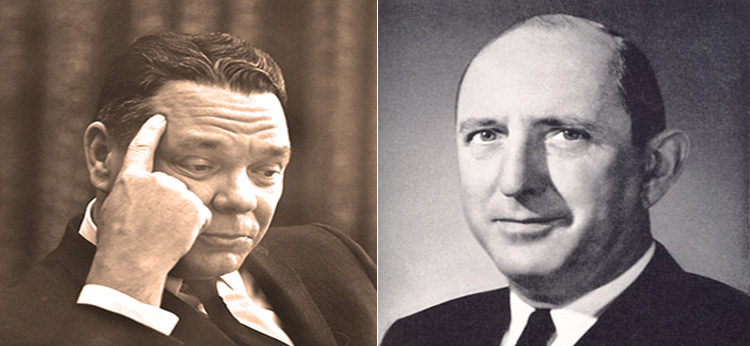
We also know that it was Hale Boggs who convinced Jim Garrison to start a New Orleans investigation into the murder of JFK. By 1972, Garrison’s investigation had uncovered so much evidence of Oswald having been framed that Boggs went public on how Hoover and the FBI had mishandled the evidence in the Kennedy assassination. Then the Senator’s airplane suddenly disappeared over Alaska. Supposedly, it was never found. But a report discovered in Hoover’s effects after he died shows Hoover knew the location of Bogg’s plane and that survivors had been spotted – information that was never released to those searching for the plane. Hoover hid this “location-document”. These two members of Lyndon Johnson’s so-called investigation team were the only ones who expressed serious doubts about Oswald as the lone assassin.
Another sign of a foul play was the appointing of Earl Warren as the Commission’s figurehead. Just for argument sake, let’s pretend the Warren Commission really participated in a sincere investigation. Let’s play with the idea of a broad investigation were the Commission suddenly changed their mind about Oswald’s guilt and honed in on the three tramps as Kennedy’s killers. Imagine the three tramps were charged and sentenced in a Federal Court and their lawyer worked on an appeal, which eventually would lead the case all the way to the U.S. Supreme Court – then what? How would the Supreme Court Chief Earl Warren act in that situation, when at the same time he was the head of the investigation? But since the Warren Commission was not a judicial body with the intent of practice law in an adversarial system it didn’t seem to matter.
Doctor Ford
No one at either Parkland or Bethesda saw a wound in the right back of President Kennedy’s neck. Not one. And how many people had seen the dead president’s body up close between Dallas and Washington – 40, 60, or more? Still, not a single doctor, nurse or other person involved with the body reported a wound in the back of the President’s neck, as was published in the Warren Report. Without that wound there is no way for the Single Bullet Theory to work (actually it doesn’t work even with that wound, since the cervical vertebrae would have been in the way). So how did the wound – originally described as located in the upper back on the official autopsy report’s wound chart – move 5.5 inches up to the neck?
Initially (and in reality) the wound in Kennedy’s back was situated just right to the spine below the third thoracic vertebrae. That’s well down on his back. But when it came time to write the first draft of the Warren Report the wound was moved up a few inches:
“A bullet had entered his back at a point slightly above the shoulder to the right of the spine.”
According to the autopsy sheet signed by White House physician Admiral George Burkley there was no gunshot wound “above the shoulder”. This was corroborated by FBI men Sibert and O´Neill, who took notes during the autopsy and wrote in their 302-report that the wound in the back was located below the third thoracic vertebrae, 5.5 inches below the collar of the shirt, slightly right to the spine. When Kennedy’s clothes arrived from Dallas to Washington they had bullet holes in the exact same position as was described in the FBI report and the autopsy sheet. Nevertheless, the Warren Commission writers saw no problem making an adjustment from well below the shoulders to slightly above. However, that was apparently still not enough to fit the idea of a single bullet theory. The problem was that the bullet hole was simply too low to have come from a bullet shot from the sixth floor. The angle was wrong. It had to be fixed, or evidence would exist that a second gunman had to have been involved.
This is when Michigan Congressman Gerald R. Ford stepped in. With a wave of his pen, he raised the wound even higher:
“A bullet had entered the base of the back of his neck slightly to the right of his spine.”
That is how the wound got relocated 5.5 inches from JFK’s back up to the back of his neck. FBI agents James Sibert and Francis O´Neill protested vehemently to that wrong placing of the wound. James Sibert pointed out that Ford with this action very well could have committed a crime; Ford was definitely misleading the American people. But when reporters asked Ford he said: “My changes had nothing to do with a conspiracy theory. My changes were only an attempt to be more precise.”
This coming from a man who had no medical degree, no experience of gunshot wounds and had not himself even seen the wounds of the dead president. Had this happened in any other western country Gerald Ford would have been the laughing stock of the press. Still he paved the way for Arlen Specter to come up with a flimsy theory that has never worked, no matter how many excuses have been created for it. Strangely enough (or maybe not) Gerald R. Ford became the 38th U.S. President.
Never Investigated
Investigation or no investigation? After 50 years that question still hasn’t been answered. Was this an FBI investigation or a Warren Commission investigation, or both, or neither? One cannot help but sense the intention of someone in the midst of all this trying to shuffle the deck and keep this question unanswered. How often have we heard Warren Commission apologists say that the murder of the 35th President of the United States has been thoroughly investigated by authorities such as the Dallas Police, the FBI, the Warren Commission and the House Select Committee on Assassinations? Some people even inject that the Rockefeller Commission and the Church Committee also have looked closely into the case.
Our opinion is that the very second that it became known that J. Edgar Hoover knew Oswald’s identity – which was before the arresting police did – the possibility of a genuine investigation vanished. According to researched timeline Hoover knew whom the Dallas Police had arrested – before the Dallas Police and ditto DA knew. An interesting fact is that the FBI officially took over “the investigation” on the 26th of November to finish a 400-page report on the 9th of December, but they sent the rifle CE 139 to FBI’s crime lab in Washington on the 23rd – and found no prints. They returned the rifle to Dallas the next day.
Then on Monday the 25th Carl Day of the Dallas Police miraculously found Oswald’s palm print on the weapon.
Why did the FBI test the weapon for prints the day after the assassination if they hadn’t already taken over the investigation? Or, if they had taken over the investigation, why did the weapon had to be sent back to the Dallas Police on Sunday?
We think it is safe to say that neither the FBI nor the Warren Commission never really investigated this murder properly. Neither did the House Select Committee on Assassinations, HSCA, 1976-79. We know that the CIA held back key information about Oswald from the HSCA as well (a current lawsuit by a former Washington Post report, Jefferson Morley, addresses this issue). The HSCA ceased to be a real investigation the minute Chief Counsel Richard Sprague and his Deputy Counsel in charge Robert Tanenbaum were removed from the committee.
One interesting fact worth mentioning is that the HSCA’s firearms panel test fired CE 139, the Carcano allegedly found in the Book Depository, and found that Commission Exhibit 399, the pristine bullet found on a stretcher at Parkland, did not match the rifling of the barrel of the weapon. Therefore, we rightly argue that the murder of John F. Kennedy has never been investigated by anyone within U.S. law enforcement.
*A side note: The investigation into the murder of Swedish Prime Minister Olof Palme is said to be the largest murder investigation in the world today, according to Swedish news agency TT. The investigation contains more than 800 linear feet of documents packed in an ultra-safe archive at the Stockholm Police Department. When Palme was murdered in 1986 there were approximately ten people who saw the killing. When Kennedy was killed 23 years earlier there were perhaps more than 400 direct witnesses and many more who had some sort of connection to the event. Had the probe into JFK’s death been a sincere murder investigation that really sought the truth, it would most likely have been hundreds of times larger than the one in Stockholm. And that fact alone is a good argument why Lee Harvey Oswald was innocent.
CIA, WC, MSM and NA
We will end this rather long review with a few general thoughts. It is commonly believed that the CIA is working for the American people; people take for granted that the U.S. Government is a government of the people, by the people and for the people. Consequently that would mean that it is the American people who are in charge of authorities like the CIA. However, in the research community today it is perceived as common knowledge that CIA’s “masters” will be found in the ownership of the banks and in the private corporations. 50 years of research shows that the patriarchy behind CIA was mostly made up of lawyers coming from Wall Street. It begun during World War II with J. “Wild Bill” Donovan and the OSS, Office of Strategic Services, and in 1947 the Central Intelligence Agency emerged from OSS.
Amongst the Agency’s founders – who called themselves the Georgetown Set – we find lawyers such as Frank Wisner, Allen Dulles, Robert Lovett and Tracy Barnes; these are the men who made CIA into the horror machine that we finally have understood it to be. Other members of this group were diplomats like George Kennan, David Bruce and Chip Bohlen as well as individuals within the major media corporations – Philip Graham, Joseph and Stewart Alsop as well as James Reston and Tom Braden. Ten of these men also had a Yale background, one of them being Eugene Rostow. Behind them all we can detect the shadows of the Eastern Establishment, the Council of Foreign Relations and the richest families in America.
Is it so difficult to think that the men in the Agency became a Wall Street-tool more than a tool benefitting U.S. taxpayers?
In all likelihood, without the massive support of U.S. mainstream Media the Warren Commission wouldn’t have stood a chance in deceiving and misleading the American people like it did. When Frank Wisner and Allen Dulles created the media infiltration program called Operation Mockingbird in the early 1950’s, we sense that this was the beginning of the end of a true democracy in the United States. Mockingbird could very well be the single worst thing that ever happened to the American people – a cancer that slowly ate its way into, and contaminated the entire political system. This is truly a case of boiling the frog.
When Senator Frank Church exposed Mockingbird to the American people in the mid 1970’s it still didn’t become known to many Americans.
The irony is grim: the journalist who were being trusted to report the truth about the findings failed to do so because they didn’t want to expose themselves. And if law enforcement agencies were being controlled, and important politicians could be manipulated; government officials could run cover-up schemes in cohort with key people within CBS, NBC, ABC, New York Times, Life, Washington Post and other major media outlets – what could the common citizen, a witness, do about it? Where would they turn to complain?
When it comes to the events that fateful weekend in November of 1963 one should never lose track of the fact that the FBI unofficially and illegally took the case from the Dallas Police the same day Kennedy was killed, soon after which Dallas District Attorney Henry Wade charged Oswald with the crime. Then on Sunday afternoon, when Oswald was shot dead, the impression is that the White House took over the case from the FBI. It definitely looked like Hoover and his FBI was to be the vehicle with which the case could be taken out of the adversarial system and thus out of the U.S. court of law.
Once again: We believe the single most important act by any law enforcement authorities after the assassination was Hoover’s making the case unreachable for the U.S. legal system; that way the so-called evidence would forever stay unchallenged – something that had to have been planned weeks or months earlier. This was Hoover’s main objective after the 22nd of November 1963.
The days following the assassination Lyndon Johnson then appointed individuals with limited experience of investigating a murder and consequently they decided who killed Kennedy before any of the witnesses had been heard. And it didn’t stop with that; the Commission would avoid hearing the ten closest witnesses to the killing and even ignore many other important key witnesses. Furthermore, they coached witnesses and they changed testimonies, they leaked to the media and they created the Single Bullet Theory.
To this day no one still knows whether the Commission had the task of investigating the murder of John F. Kennedy or if they were just to write a report based on FBI’s findings. What we do know is that as long as the Warren Commission could act as some sort of judicial entity, the unchallenged evidence could pass from the FBI into the National Archives without going through a process of validation. Therefore, the items portrayed as the evidence were never tested for their evidentiary value. Once in the archives, any scrutiny of these items could be restricted. The entire advantage resides with those who want to hide, while those who seek to expose have all the disadvantages.
After many years of research we have come to the conclusion that the murder of John F. Kennedy has never been investigated. The 35th U.S. President was just a bump in the road, someone who for a brief time in history was engaged in a futile quest of trying to take back the country to the American people, and someone who – together with Lee Harvey Oswald and JD Tippit – was brutally executed for it. And the Warren Report is just a report and not to be confused with an investigation.
–Staffan H. Westerberg & Pete Engwall
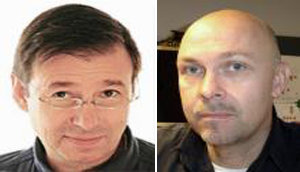
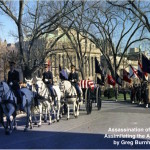
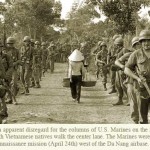
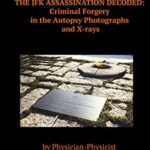
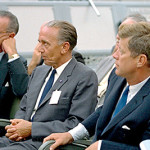
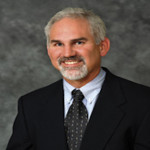
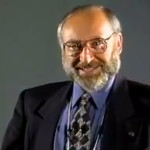
Wow thanks and Mr Burnham why don’t you consider acquiring the COPA John Judge collection, for truths posterity only a few great persons would qualify?
Your welcome. I’m sure that John’s collection will be preserved without my help. If I’m needed, they know where to find me.
Greg
Just came across your website…Awesome my friend…awesome !!!
I have been researching the JFK assassination since 1973…
I suggest a few sources…: “Thy Will Be Done (Dennett & Colbly),
“Battling Wall Street” (Gibson), “The Secret Alliances of the CIA:
From WW2 to Watergate” (RollIng Stone-circa 1976-Howard Kohn),
“The Armies of Ignorance” (William Corson), “Understanding Special
Operations” and “The Secret Team” (Fletcher Prouty), “Bitter Fruit”
(Schlesinger…many, many other souces…you probably are familiar
with these, but just thought I’d mention them…11/22/63 was
some type of covert coup d’etat…this I have no doubt…every “trick”,
device and form of manipulation was applied and used in order
to deceive, manipulate, “corerce”, blackmail, marginalize and silence
(including murder if {if???} and where and when necessary) in order
to prevent and/or neutralize any exposure and/or counter-move
to over-ride the interwoven agendas of the top and mid-levels of
the plot to murder JFK and this network’s control, “influence”, captivation, and “takeover” of the policy making apparatus (financial/
economic, foreign and domestic)…I have really delved deeply into
this event and its “ripples”…I have come to see the JFK assassination as what has been called a “deep event” but to
better phrase , it would be akin to “political tectonic event” where the true impact and meaning of JFK’s murder, removal and overthrow
was , “deep event” ( Scott and Evica) and well below
and under the “surface” of the “normal” (recognizable/ perceived) gov/establishment infrastuture…..
Thanks David. Yes, this event went much deeper than the homicide of a duly elected president. Thank you for the suggested sources. Fletcher Prouty and I were friends and he was a very good source for my research. I miss the days of just picking up the phone to say, “Hey Fletch…what about this?” You may want to visit my forum where Charles Drago, a close associate of George Michael Evica, is a founding member and contributor there, as well.
Interesting how William Caseys I believes with house on market in Palm Bach Fl showed “Secret Team” on his shelf as if to say hey I’m reading someone very close to getting most if not all right? Though I think as SR Dusty Roadhe says a perfect French with Landsdale assassin team with impunity immunity is perfect him teams from Diems killing as false retribution